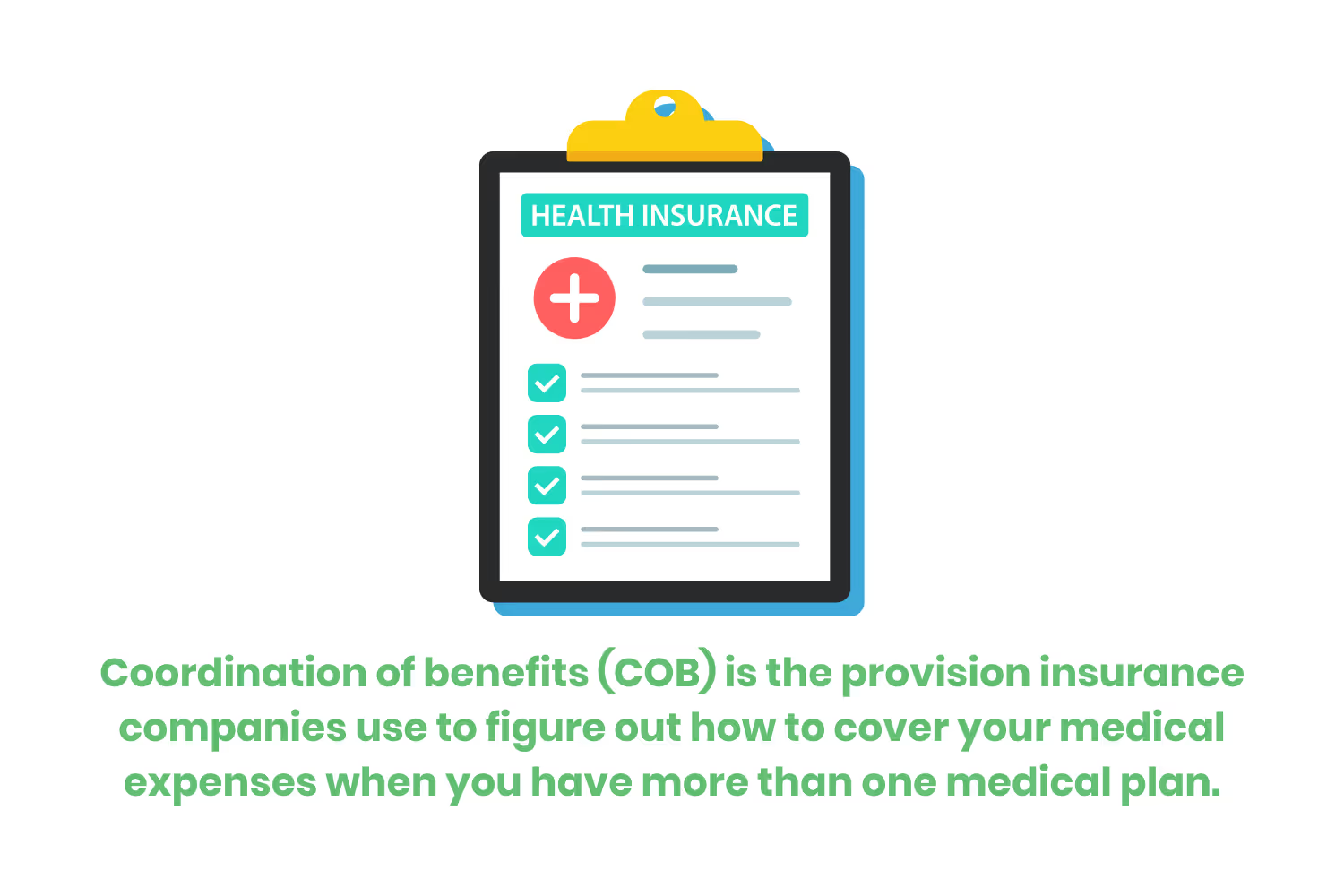COB Vs. EOB: Everything You Need to Know
A common question among billing and coding staff is, “What is the difference between the coordination of benefits and the explanation of benefits?” Let’s go over what these processes even are as well as the stark differences between them.

The medical coding market size reached a value of a little over 18 billion USD in 2022. Experts predict this value will grow at a compound annual growth rate (CAGR) of 9.85% in the coming years (2023 to 2030).
The efficiency of how your company’s medical coding and billing team functions determines your own values and revenue. You can either face well-deserved financial gains or significant financial losses.
At the risk of sounding redundant, when done correctly, your medical billing team is a huge asset when it comes to your revenue cycle management. When done poorly, months of recovery and tedious fixes are likely ahead of you.

That’s why it is essential to understand the ins and outs of billing and coding, to the best of your ability of course. There are a few key factors you should keep in mind when working in this field.
One of them happens to be knowing the procedures when it comes to healthcare insurance benefits and contracts. As medical billers and coders work closely with these insurance companies, it only makes sense to familiarize yourself with their rules and regulations.
A common question among billing and coding staff is, “What is the difference between the coordination of benefits and the explanation of benefits?” Let’s go over what these processes even are as well as the stark differences between them.
Medical Billing & Coding
As a little added bonus, I want to go over what medical billing and coding is. As well as a little bit of its history.
This important sector of the healthcare system helps to record and present the services that physicians perform to their patients and document the diagnosis of said patients. This helps doctors keep track of each patient's treatment plans while obviously also ensuring they get reimbursed for their work.

The official coding of disease began in the 17th century. In England, the London Bills of Mortality collected data on certain diseases. These diseases each had a numerical code that measured the most frequent causes of death. This evolved in the 1830’s however to better regulate and streamline the terminology used. During this time, Dr. William Farr proposed a unification classification system for these medical codes.
Fast forward to 100 years in the future, during the 1930’s the system evolved into the International List of Causes of Death. The World Health Organization eventually adopted this system, which kick-started the expansion of this framework into the International Classification of Diseases (ICD). Today, we use the 10th revision of the ICD coding system. This system incorporates the use of coordination of benefits (COB) and the explanation of benefits. What a segway, am I right? Let’s talk more about these two subsystems.
What is Coordination of Benefits (COB)?
Coordination of benefits (COB) is the provision that insurance companies use to figure out how to cover your medical expenses when you have more than one medical plan. This allows payers to decide how a person will handle their payment responsibilities.
For example, payers can determine which plan has the primary payment responsibility and how the other plans can contribute. This is of course if an individual has more than one plan. Here’s how the process goes.
This system helps to ensure that individuals pay on their claims by identifying beneficiary health insurance benefits. It also coordinates the payment process and makes sure that the primary payer is the first to pay.
The COB makes sure that the supplemental insurance payers receive eligibility data and claims with the remaining payments. For the Benefits Coordination and Recovery Center (BCRC) to automatically transfer claims to private insurance companies, there must be an agreement in place. This provision is helpful for the sheer fact that it also ensures there are no duplicate payments.

When it comes to the coordination of needs for the Part D benefit, the COB accommodates this by providing the True Out of Pocket (TrOOP) Facilitation Contractor. It also provides Part D Plans with secondary non-Medicare prescription drug coverage that must facilitate any payer determinations. Also, the calculation of any TrOOP expenses of beneficiaries. COB allows employers to participate easily in the Retiree Drug Subsidy (RDS) program.
There are a few disadvantages when it comes to the utilization of COB. Having multiple health insurance plans inherently complicates things after all. An example of a less-than-favorable result of the COB process is the administration complexity of it all.
There are extra burdens associated with this provision including:
- Additional paperwork
- Coordination with multiple providers
- Understanding the details of each plan’s guidelines and coverage
Cost consideration is another disadvantage of using COB. Individuals should analyze cost-benefits before enrolling in multiple health insurance. The last thing you need while dealing with health insurance claims are surprises such as expensive combined premiums and less-than-desirable deductible payments.
What is the Explanation of Benefits (EOB)?
Explanation of benefits (EOB) is documentation of how insurance broke down and processed your claim.
You receive this notice at the time the patient billing statement is ready. It tells you exactly how the services you receive categorize and affect your payment responsibilities.
The information broken down includes the following:
- Services provided.
- Charges from the doctor or hospital.
- What insurance did and did not cover.
- What insurance will pay.
- How much must the patient pay.
If you need a way to understand the breakdown between providers, your insurance, and you…then EOBs are where you need to look. You want to make sure you are receiving the full benefits and discounts eligible to you under your insurance plan! We suggest keeping your EOB for your own records, especially if you need to speak to someone about your bill or if you have questions.

Benefit statements will all look different, but the good news is they will contain the same basic information! An account summary will be one of the helpful details placed within the document. This lists your personal account information, such as your name, dates, and claim number.
You can also find claim details here. If you are looking for a list of dates on which providers performed services, this is where you should look. It will also mention the description of each service. This might be obvious, but you can also find the monetary amounts for each service provided.
The amounts are:
- Charged by provider or facility.
- What your insurance agreed to pay per the contract with the provider or facility.
- Whatever the difference is between what the provider or facility charged and what insurance paid for. The difference may go by a few other names including “Adjustment”, “Contracted Agreement”, or “Allowed Amount.”
There will also be another section in the EOB that goes over things such as copays, coinsurances, or deductibles. EOBs also address any claim denials there may be.
These denials can happen for many reasons:
- Your service is not covered under your insurance plan. This is also called a non-covered benefit.
- Your insurance coverage ended before you received services.
- You received the service before enrolling in insurance coverage, or aren’t eligible for coverage.
What's the Difference Between COB & EOB?
While COBs and EOBs go hand in hand, there are some differences between the two. The EOB, which you receive from an insurance provider after submitting a claim, will play an integral part in obtaining a COB. Sending out an EOB to another insurance is how you can receive your EOB.

COB refers to the process of determining which insurance carriers will cover which portion of fiscal responsibility. This is of course when it comes to a patient’s medical expenses. Oftentimes you will see this when a patient is covered by an employer’s health insurance while they’re also under their spouse’s. An EOB simply states how a patient’s insurance covers the cost of the service.
Knowing what both of these processes are will maximize your billing team’s efficiency when handling claims. As well as how they affect the billing cycle. If in your EOB you see that the insurance company denies your claim, you can use COB information to have them reconsider. This information can include details from an accident or any medical records. Usually, there are pre-existing conditions included. Note that insurance companies usually request their partners to update your COB information annually.
Conclusion
With healthcare spending rapidly growing, administration costs continue to climb in the United States. This is due to the fact that it’s so important to keep medical billing and coding procedures as streamlined as possible.
Healthcare organizations today aim to provide the best quality care while being financially savvy and reducing costs where they can.
While it’s essential to keep your medical billing and coding team up to date on topics such as EOBs and COBs, you can also make everything more streamlined with the use of third-party revenue cycle management software.
These software programs allow you to collect outstanding revenue faster while reducing your administration costs. With proper training and software, high claim denial rates and uncollected revenue are a thing of the past.
Emphasize your product's unique features or benefits to differentiate it from competitors
In nec dictum adipiscing pharetra enim etiam scelerisque dolor purus ipsum egestas cursus vulputate arcu egestas ut eu sed mollis consectetur mattis pharetra curabitur et maecenas in mattis fames consectetur ipsum quis risus mauris aliquam ornare nisl purus at ipsum nulla accumsan consectetur vestibulum suspendisse aliquam condimentum scelerisque lacinia pellentesque vestibulum condimentum turpis ligula pharetra dictum sapien facilisis sapien at sagittis et cursus congue.
- Pharetra curabitur et maecenas in mattis fames consectetur ipsum quis risus.
- Justo urna nisi auctor consequat consectetur dolor lectus blandit.
- Eget egestas volutpat lacinia vestibulum vitae mattis hendrerit.
- Ornare elit odio tellus orci bibendum dictum id sem congue enim amet diam.
Incorporate statistics or specific numbers to highlight the effectiveness or popularity of your offering
Convallis pellentesque ullamcorper sapien sed tristique fermentum proin amet quam tincidunt feugiat vitae neque quisque odio ut pellentesque ac mauris eget lectus. Pretium arcu turpis lacus sapien sit at eu sapien duis magna nunc nibh nam non ut nibh ultrices ultrices elementum egestas enim nisl sed cursus pellentesque sit dignissim enim euismod sit et convallis sed pelis viverra quam at nisl sit pharetra enim nisl nec vestibulum posuere in volutpat sed blandit neque risus.

Use time-sensitive language to encourage immediate action, such as "Limited Time Offer
Feugiat vitae neque quisque odio ut pellentesque ac mauris eget lectus. Pretium arcu turpis lacus sapien sit at eu sapien duis magna nunc nibh nam non ut nibh ultrices ultrices elementum egestas enim nisl sed cursus pellentesque sit dignissim enim euismod sit et convallis sed pelis viverra quam at nisl sit pharetra enim nisl nec vestibulum posuere in volutpat sed blandit neque risus.
- Pharetra curabitur et maecenas in mattis fames consectetur ipsum quis risus.
- Justo urna nisi auctor consequat consectetur dolor lectus blandit.
- Eget egestas volutpat lacinia vestibulum vitae mattis hendrerit.
- Ornare elit odio tellus orci bibendum dictum id sem congue enim amet diam.
Address customer pain points directly by showing how your product solves their problems
Feugiat vitae neque quisque odio ut pellentesque ac mauris eget lectus. Pretium arcu turpis lacus sapien sit at eu sapien duis magna nunc nibh nam non ut nibh ultrices ultrices elementum egestas enim nisl sed cursus pellentesque sit dignissim enim euismod sit et convallis sed pelis viverra quam at nisl sit pharetra enim nisl nec vestibulum posuere in volutpat sed blandit neque risus.
Vel etiam vel amet aenean eget in habitasse nunc duis tellus sem turpis risus aliquam ac volutpat tellus eu faucibus ullamcorper.
Tailor titles to your ideal customer segment using phrases like "Designed for Busy Professionals
Sed pretium id nibh id sit felis vitae volutpat volutpat adipiscing at sodales neque lectus mi phasellus commodo at elit suspendisse ornare faucibus lectus purus viverra in nec aliquet commodo et sed sed nisi tempor mi pellentesque arcu viverra pretium duis enim vulputate dignissim etiam ultrices vitae neque urna proin nibh diam turpis augue lacus.




